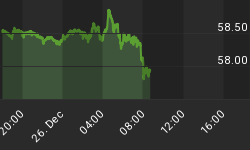Fear of deflation - that feeling of concern about declining prices--is slowly giving way to the dread of inflation. It prompts some economists to focus on the danger and damage of inflation which is a more familiar evil. They view the American money system as a giant inverted pyramid with ever more Federal Reserve money at the base and large growing layers of bank deposits resting on it. Official Federal Reserve statistics presently report a base of $692 billion Federal Reserve notes and a deposit superstructure of $8.9 trillion. The base is growing at a 9.2 percent rate, the superstructure at a similar rate. (Federal Reserve Bulletin, October 2003).
The Federal Reserve Board of Governors with the assistance of five representatives of the regional Reserve banks are juggling the money pyramid. They direct the issue of money by way of purchasing Federal government securities, lending to member banks, manipulating open-market operations, fixing reserve requirements, establishing discount rates, and issuing regulations concerning these functions. But no matter how diligently they juggle, theirs is an inhuman task. To manage the monetary affairs of millions of people exceeds the ability of any committe of twelve wise men, no matter how many regulatory powers the U.S. Congress may bestow on them. Built on politics and resting on the police powers of government, the pyramid is a warped and hollow structure. It distorts economic production, victimizes millions of innocent people, and breeds domestic as well as international conflict. It is visibly unstable and often threatens to contract and crumble.
At this time, goods prices, we are told, are rising at a harmless rate of just 2.1 percent. When compared with the double-digit rates of the 1970s and 1980s the present rate indeed appears to be harmless. But things are seldom what they seem; in affairs of state they rarely are. The inflation index, which primarily calculates key consumer goods and services, that is, a relatively stable part of the economy, hardly weighs the soaring prices of real estate, raw materials and commodities which have been rising at double-digit rates. But whatever the true depreciation rate may be, it must be compared with the rates of return on U.S. Treasury obligations. At the present, Treasury bills yield 1.11 percent and two-year notes 1.77 percent. Commercial banks, the reserves of which consist primarily of these Treasury obligations, earn these returns while their reserves depreciate at much higher rates. Adding insult to injury, they are forced to pay income taxes on their returns. It cannot be surprising that they eagerly expand their credits in order to compensate for the depreciation losses on their reserves.
With the stock of money expanding by nearly one trillion dollars this year, why are goods prices not rising at double-digit rates? The answer to this economic puzzle can be found in a rare combination of economic factors. The most glaring cause is the move of some American manufacture to low-cost countries such as China, India, and Malaysia. Massive imports of consumer goods from those countries keep American goods prices lower than they otherwise would be and thereby sustain the purchasing power of the dollar. Moreover, many American dollars spent abroad tend to return to the United States to purchase Treasury obligations. They help to finance the massive Federal government deficits and thus keep interest rates lower than they otherwise would be. The importation of goods and services sustains American standards of living while the foreign purchases of Treasury obligations help to support the American capital market. Never before have so many foreigners labored so diligently to serve the economic interests of the American people.
We must not plan the future by the past. It is unlikely that foreign producers will forever deliver their goods in exchange for U.S. Treasury promissory notes and bonds. A growing debt casts a growing shadow not only on the brightest place but also on the biggest debtor. It soon may signal the Federal government and the Federal Reserve to mend their prodigal ways. If they nevertheless should press ahead, we must brace for ever rising interest rates, falling dollars, and soaring goods prices. The American economy may even experience another boom and bust.
The love of money, fiat money that is, is the root of much evil. In ages past, our forefathers used real economic goods as money, such as precious metals. They are honest money the value of which depends entirely on the peoples values and choices. Unfortunately, they are moneta non grata in our world of central bankers and deficit spenders.
















